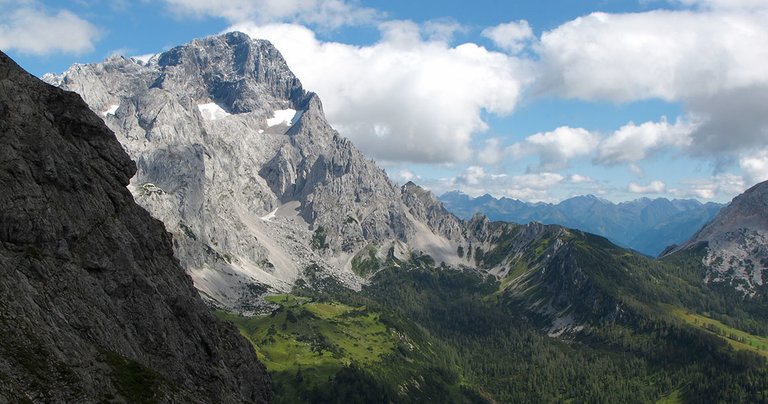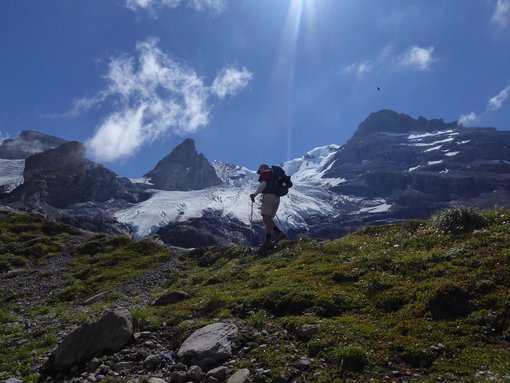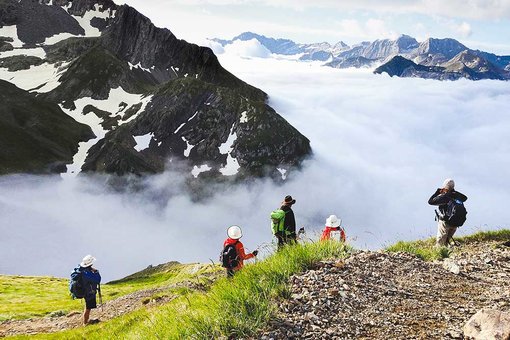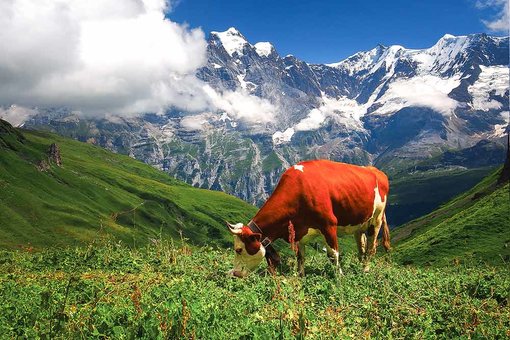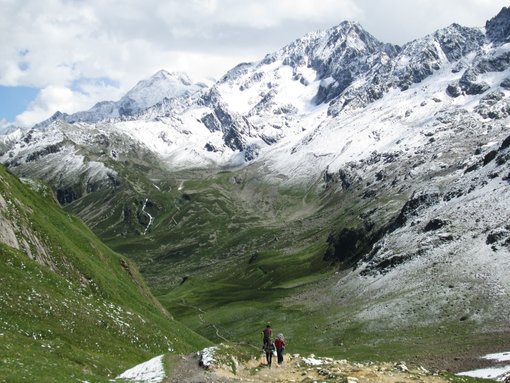Every day is a new adventure. The Alps remain a source of constant interest, in some ways a muse, in others a place of peace and relaxation. Spending a summer in the Alps is a view into a constant procession of different cultures. Everything from the traditional agriculture practiced by alpine farmers to the endlessly charming alpine art forms, such as wood carving, or the beautiful unique sound of an Alpenhorn being played from the summit of a snow-capped mountain, combine together to create a vibrant picture of a region with a history rooted in nature.
For the people that live in these mountains, every day is a day coexisting with the natural world. It so incredible sharing these experiences with them — facilitating meaningful interactions between people and discovering the secret corners of this enigmatic region. Weeks spent in the mountains provide an escape from pressures of everyday society, from things like the relentless news cycle or the strangeness of living in our modern, mechanized world.
What is it about hiking that is so important? Why does it still seem so crucial that somewhere in the world there are still people bailing and drying hay through traditional techniques, that there are still forestry workers individually marking trees high in the mountains — carefully watching the health of remote and silent forests? The people who travel to this area come from a variety of different professions; doctors, politicians, therapists — every career imaginable, and most come away with a shared impression: that the access to hiking in these regions provides a distinct benefit of health and happiness for the people that live in them. Whether it is an elderly Swiss couple hiking from a village to sit at one of the many vista benches along the mountain trails, or some of the younger athletes from the regions always in search of another daring adventure, the impression is the same — this connection with nature brings people so much happiness.
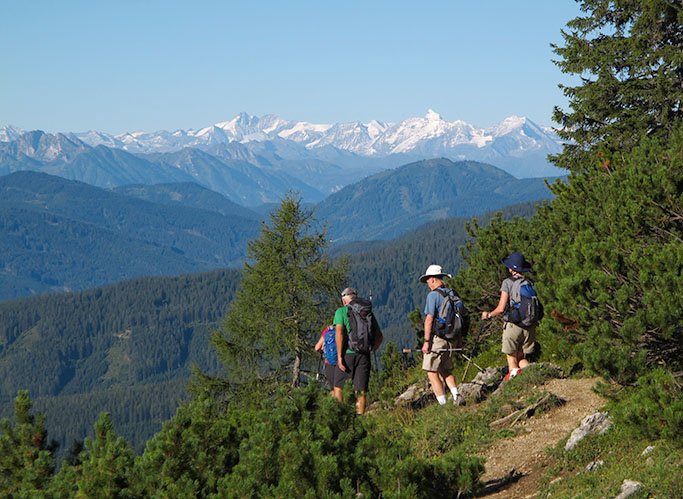
Hiking in the mountains provides an important impression of how precarious the preservation of these natural worlds is, especially given our rapidly changing climate and expanding society. It is important to see firsthand how the natural world is changing and how different countries are working to preserve this precious balance — especially considering how important this natural connection is for the health and happiness of the locals living in these mountains.
The most physical example of the changes in our climate and the nature in the Alps is the recession of the glaciers. In a way, the glaciers are a natural majesty that is already lost, unless we plan to live for millennia and patiently wait for the next ice age! In the Alpine chalets you can see old paintings and photos depicting entire oceans of ice, which are now reduced to icefields clinging to only the highest reaches of the mountains. A stunning representation of this is the Mer de Glace, a famous glacier above Chamonix. Here, you can walk down a stairway from the cliffs above down onto the glacier, a walk that takes about a half hour. Roughly every ten minutes of descending there is another marker, showing how many hundreds of feet the ice has already sunk - just in the span of a human lifetime!
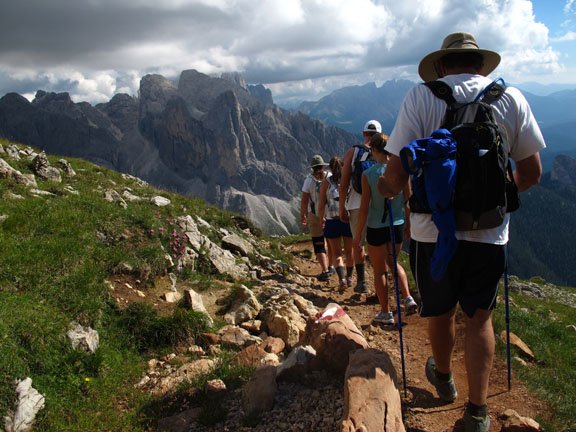
On the opposite side of the coin, there are the parts of nature which still persist and thrive. An example of this is the humble Arolla pine, or Alpine Stone Pine. This hardy tree can live for over a thousand years, and produces its pine cones (which are depicted as far back as Roman heraldry) only every 30 years. These trees are endemic to the Alps and represent some of the only true ancient forests remaining in Europe. Hiking through these forests you can truly feel the weight of time, as this truly ancient species continues to thrive in secluded alpine environments.
So, on one hand we have receding glaciers, and on the other, ancient trees, both of which are testaments to the passage of time, as well as the changes in our environment. Otherwise, these two things are seemingly unrelated. However, there is an effect which relates the receding glaciers and forestry. As the permafrost in the high mountains has started to rapidly melt, the ice that binds the mountains together has weakened, causing the mountains to erode in entirely new fashions, and creating a new risk for alpine villages of floods, rockslides, and in the winter avalanches. At the turn of the millennium, Swiss forestry lovers noticed this effect and began to work to protect the forests in these alpine areas, because the old growth forests in the mountains became the main factor in maintaining their stability, as the ancient trees provide a similar state of soil and snow stability that the permafrost did in the high mountains. It was those who spent every day in the mountains who were able to analyze the changing ecosystem, as well as provide solutions! The effect of resulting programs to protect these forests has been so successful that there is even consideration now whether a surplus of trees has begun to limit biodiversity of plants and herbs on the forest floor. So it goes with precarious balance of nature.
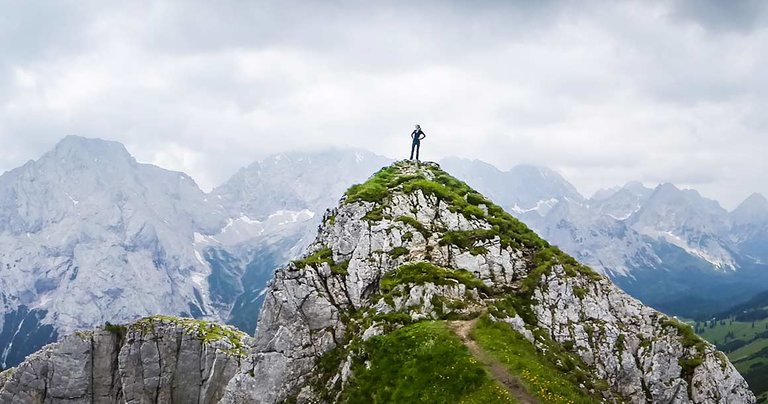
As hikers, we are able to see all of this first hand. We are able to be witnesses to the persistence of ancient forests, as well as the threats to these regions such as floods or winter avalanches, as well as the slow recession of the glaciers. Being involved with these natural changes is important. In part because protecting these environments is so crucial for the health and happiness of those that live in and visit them. But also because it allows us to see the effects of time and of our society on the natural world. This is because, although it might not feel like it when you’re walking down Lexington Avenue, Nature and Civilization are still intimately connected, and completely symbiotic. For me, it is both important and special to be able to bring people into these worlds, allow them to experience not only the euphoria of exploring the mountains, but also seeing how the natural world is changing, and why it is important that we remain connected with it, especially so we know how to properly protect it. That’s at least one reason why it’s important to hike.
